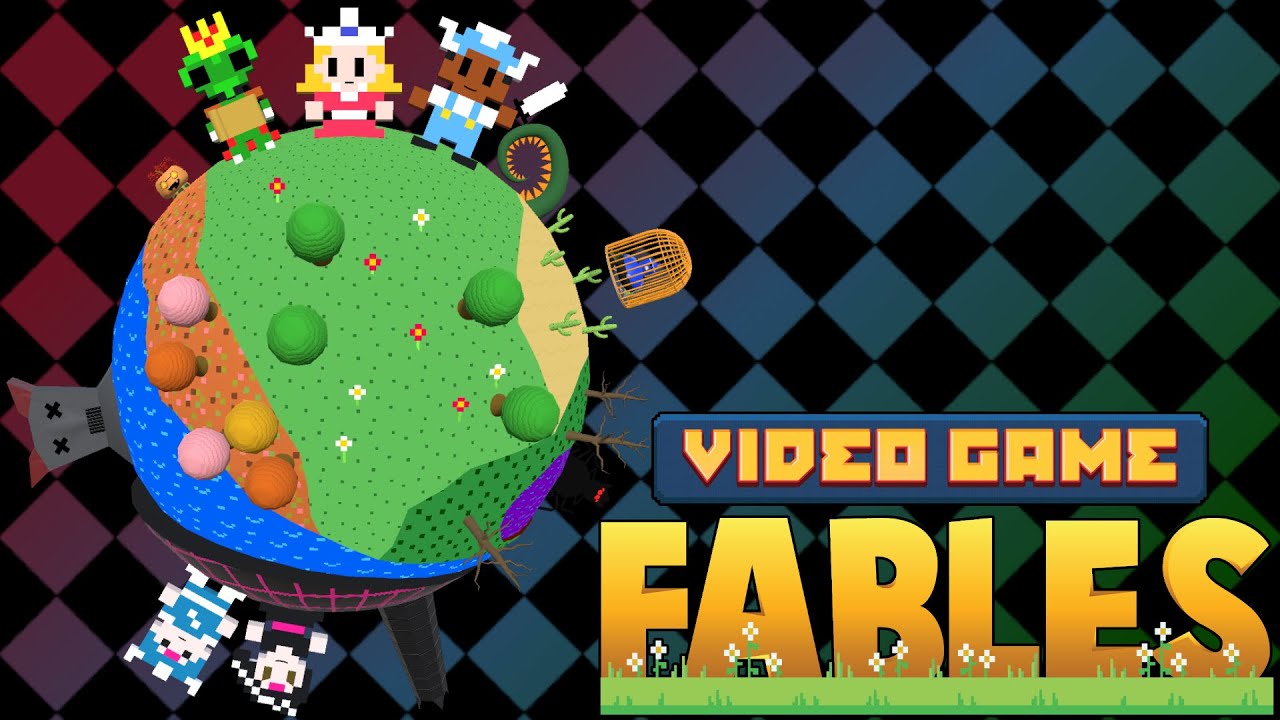I love it when my media is clever and deconstructionist, passing commentary on what has come before while building something new; see Watchmen, League of Extraordinary Gentlemen, or anything else Alan Moore has written in the past 30 years.
That said, I also love it when media is dumb as rocks. Colourful, simple, and funny in a visceral, straightforward way. Show me a guy hitting another dude with a frying pan, and you have my vote.
With that in mind, please consider that the first boss of Momiji Studios’ Video Game Fables is a chair. A damn chair.
There. That’s the review. Perfect. 10/10.
Thanks for coming. Try the fish.
To extrapolate, Video Game Fables is an RPG about video games. The setting was once a generic Japanese-style fantasy affair like Zelda or Dragon Quest. VGF opens with our hero, after collecting the sacred prisms, about to rescue the Princess and save the world from the clutches of the villainous Lord Gator… When the game is left on pause by a mysterious Deity. As you can imagine from the little pixel guy’s point of view, this is pretty devastating.
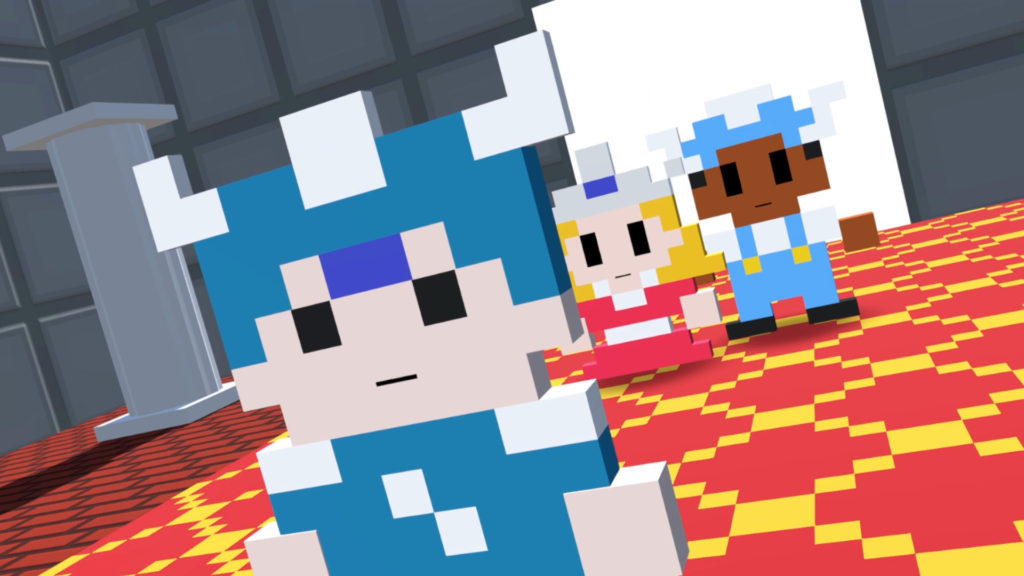
Decades have passed; the King and Lord Gator have devised an exciting new script to get the Deity interested in playing the game again. However, this backfires when the new Princess, Aru, does not care and will not play along. Meanwhile, the game’s original hero, after years left in limbo, snaps, releases the original, now tormented and power-mad Princess, and together seal the castle containing the King and Lord Gator, which threatens the game’s stability.
The only people vaguely motivated enough to save the world are a misanthropic princess, the Lord Gator’s wallflower son, and a cheery villain-in-training who is secretly a Hero fanboy.
VGF is far from the first game to deconstruct video games. The Paper Mario series, which VGF rakes ample inspiration from, loves to poke fun at how routine Bowser’s kidnapping attempts have become. While Captain Rainbow paid a lot of lip service to the idea of what video game characters do after their game is done. Even Disney has had a pop at it *gestures to Wreck-It-Ralph*
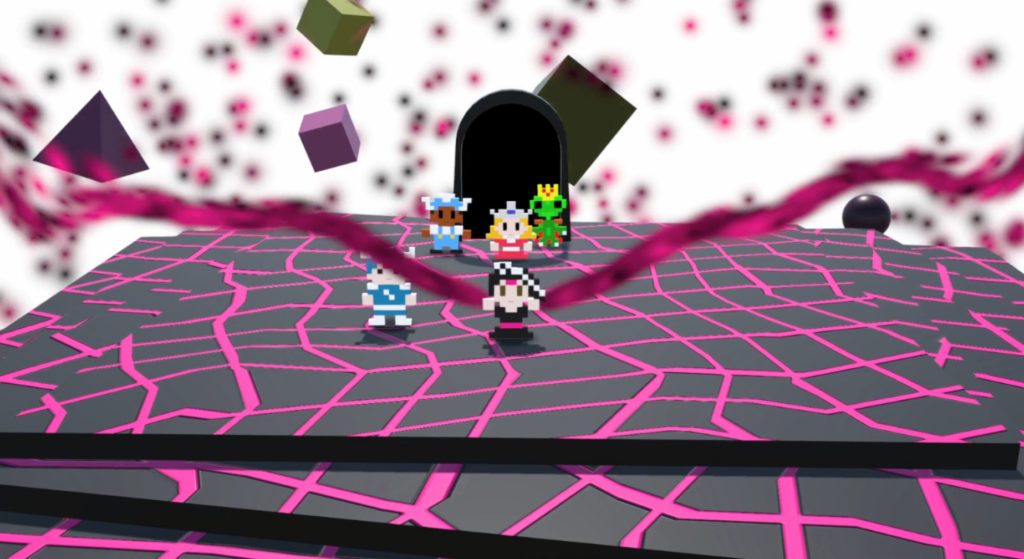
But remember what I said about it being Dumb as rocks? VGF’s humour is so clever it loops the moon and comes back around as a gibbering, giggling clown – and that is not an insult, far from it.
Take the previously mentioned evil chair – Pallin Throne (get it).
* They only got to be a boss because of a typo on a legal document about who inherits the Throne.
* They cackle like an anime villain while sitting on a much bigger chair.
* When defeated, they won’t fit in a cell.
* Then the remaining chair asks for help, only for your party to quickly abandon them.
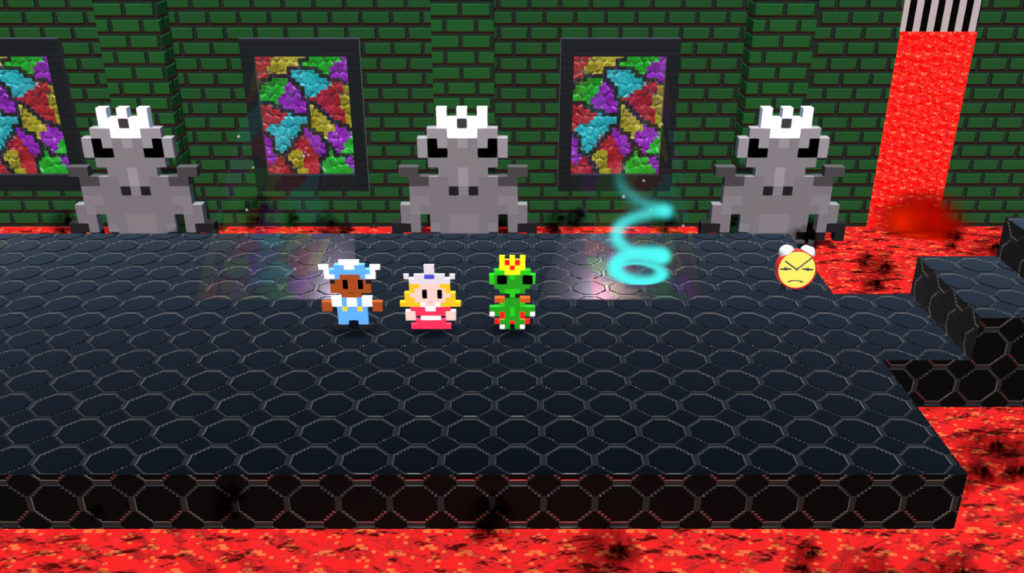
All of the gags are simple yet smart. I have never played a game with a sense of humour quite like this before. It is subtle but hilarious. I can’t get enough of it. Other top moments include; A man is turned into a frog, only to discover he is not a man but a slightly larger frog. Nate explains combat to Aru via a tutorial, but she A) already knows, and B) doesn’t care. The game’s innkeeper is a weirdo who only runs an inn so he can watch you while you sleep. The town chef, who operates from a cauldron in a witch-hat-shaped tent, brews magic skills from enemy remains and refuses to comment on whether she’s actually a witch.
The jokes are all diamond-bullet-to-the-brain level observation stuff while also being bellyaching.
The gameplay, like the humour, deconstructs other games too. In each random, turn-based encounter, your actions have delays and recovery times, clearly displayed on the time bar at the top of the screen. You’ll want to use your basic attacks as often as you can. Each attack has about a 40 per cent chance of scoring a critical hit, and critical hits are how you unlock stronger attacks. Every ability, from fireballs to frying pans, needs a stored critical hit to activate. Couple this with eight weapon types that interact with turns and criticals differently; bows are fast, hammers hit harder, and spears store additional critical hits. Quickly combat becomes a clever mix of attacking, saving and spending critical hits while reading enemy animation cues for tips on what is about to hit you next. Faster actions are rewarded with more potent attacks too. Think of it as a more cerebral take on Paper Mario’s action commands that rewards planning and quick thinking.
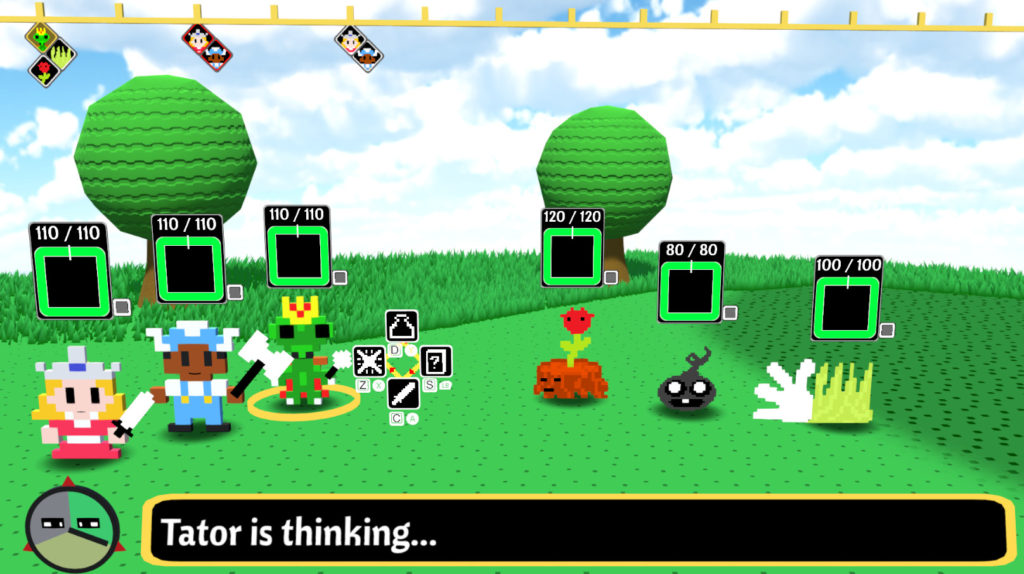
Another note is how XP works; ever played of those Tingle games? Where everything from fighting to talking costs Rupees? Well, what if everything on your character menus costs XP? Level Up the entire party? Equip a newly crafted Topaz weapon or brewed Skill? That is gonna cost XP, and equipping costs more the higher level you are. Maybe it is worth putting down your level to equip new weapons? Or maybe, you would rather gamble without those new skills for now, with everyone’s increased HP and stats. It is surprisingly deep and rewarding system to tweak about with.
How have I got this far without mentioning the gorgeous graphics comprised of low-poly 3D environments reminiscent of Mario 64, with chunky pixel art sprites? I think they are sprites? Models? They definitely represent in-universe sprites. Bah. The point is, VGF has a luscious and unique take on Paper Mario’s flat sprites. Seriously, these guys look delicious. I demand a Tator ice lolly yesterday.
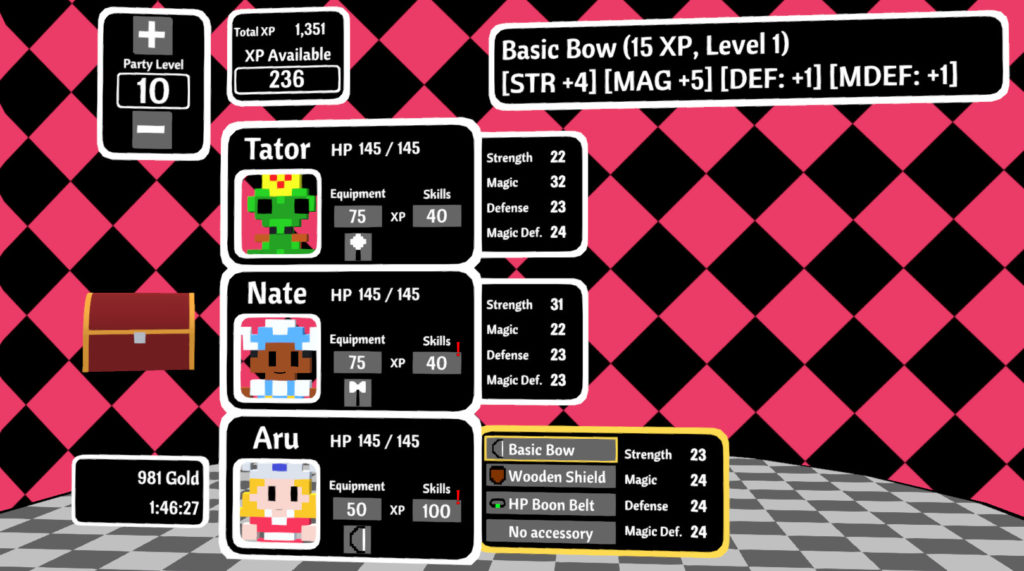
Add countless references to classic Nintendo titles, and that’s Video Game Fables. Clever, Funny, Pretty, and It Plays really well too. The game only continues to get smarter and more deconstructionist as it goes on. I can only recommend you go play it for yourself.
A Captain Rainbow reference in 2022, eh? Someone get me a tiny tin trophy.

